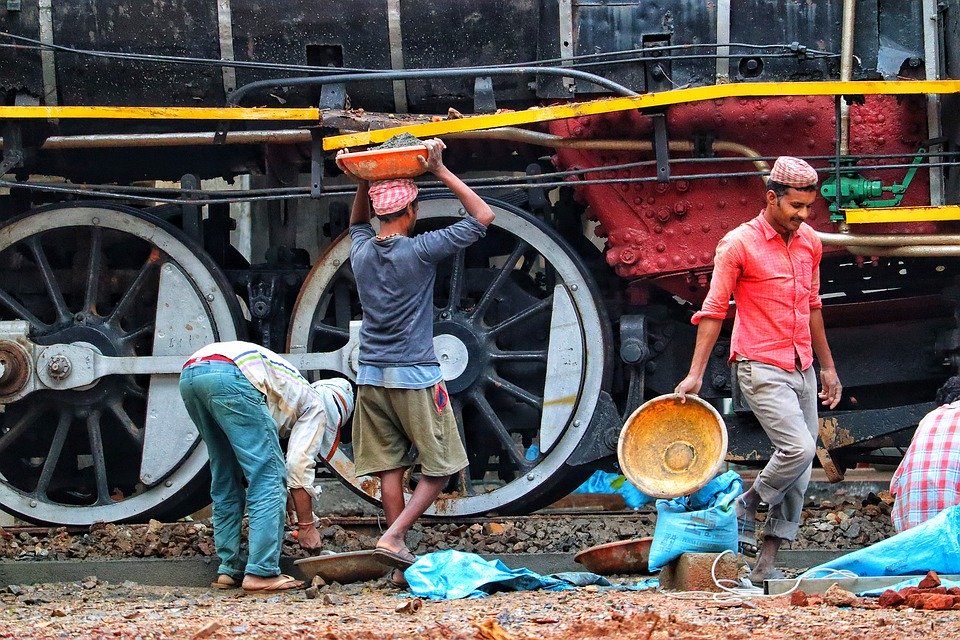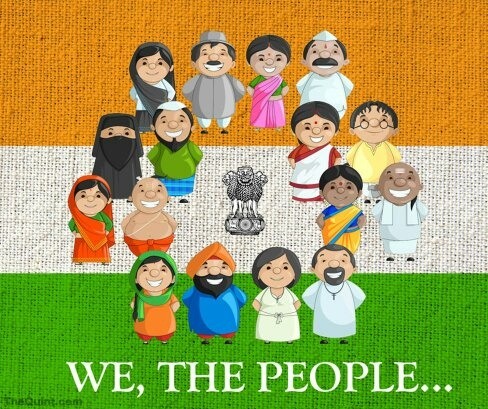
A sermon was given by Frederick Lewis Donaldson in Westminster Abbey, London, on March 20, 1925, in which he had highlighted seven social sins:
Wealth without work.
Pleasure without conscience.
Knowledge without character.
Commerce without morality.
Science without humanity.
Worship without sacrifice.
Politics without principle.
This essay tries to assess the validity of these sins in times of COVID-19. In the present crisis, seven sins are directly or indirectly visible in our society. Politics has lost rationality and political leaders are promoting unscientific methods to fight the virus, while on the other hand we are yet to ensure Personal Protective Equipments (PPE) for our doctors and health care workers. The economically backward and marginalised sections are treated in worse manners, the spray of disinfectants is one such example leaving aside the plight of migrants who were forced to walk milestones under sun with empty stomachs. The white collar class is embedded in their profits and pleasures and the rational minds interventions is not visible or audible to build a counter intuitive approach. We analyse the impact of COVID-19 on different sections of the society vis-à-vis the government’s plan to tackle the spread of the virus.
The Virus as pandemic
India, in comparison with the USA and China, was quick to observe a complete lockdown but did so without proper assessment of factors that include equitable distribution of resources, safety, shelter, and economic support to the marginalized sections of the society, especially the daily wagers and migrant workers. Till 5th of April, the number of cases have come to be around 3500 in India and 12,02,433 worldwide. The globally integrated world allows human movement across the countries and continents for the purpose of education, work, and entertainment, then how could social distancing prevent the pandemic. In the case of India, early lockdown may have controlled the spread in the short-run (“flattening the curve”) however despite the lockdown the number is escalating. The message thus of maintaining hygiene was not clear and it probably lacked assessment of lockdown and its impacts that will cause panic and anxiety instead of a complete shutdown of public movement.
The loopholes at the policy level
Given the occurrence of loss of lives in neighboring country and worldwide, it was necessary to regulate and surveil the mobility, travel history of those arriving in India from international borders.
The central government did not utilize the time (the deadly symptoms were visible worldwide since Oct. 2019) to plan strategies, PPE, quarantine facilities for patients and instead the Prime Minister announced a 14 hours of “Janata curfew” amid the chaos without mentioning any details about what after that. Meanwhile, the movement of people across the borders continued. The next public address announced a 21 day lockdown without again mentioning about what happens during the lockdown. No financial plans, mitigation measures were discussed or announced causing anxiety with migrants rushing back to their states and people gathering in large numbers at the grocery shops, not knowing whether transport facilities will be available or shops will remain open.
Due to the sudden suspension of transport services, a large section of the employees in the informal sector, the migrants, and the daily wage workers started walking towards their homes without knowing how long it may take to reach with the fear of loss of jobs and reality of having no savings to pay the amount of the rented houses/shelters. The movement of people in thousands violated the idea of social distancing posing a threat to their own lives.
The finance minister, Nirmala Sitharaman announced the first relief package after a day of Rs 1.70 lakh crore amounting to size of 0.8 % of the FY20 GDP. Whereas many developing and developed country have announced their first economic package of 5 to 10 per cent of GDP. Is this sufficient to provide essential commodities to the migrants and economically backward population of 5th largest economy of the world whose daily subsistence has come to a halt otherwise? 22 lakh health workers (including doctors) got health insurance of INR50 lakh for 3 months. If government provides PPE to health workers then there may not arise the need to provide health insurance in the first place. The per-day wage of MGNREGA workers increased from INR182 to INR202. But it will not provide any relief during the lockdown period; one, because work is not happening anywhere and two, since the government is against the program (around 800 thousand crores of MGNREGA wage payments are still pending and number of days of work is shrinking as well) so there is no guarantee that it will give any relief after revoking lockdown. The relief package provides relief to 204 million women who are to receive Rs 500 per month for 3 months. Other Countries in comparison are spending massive amounts. This is not the time to follow the FRBM recommendations, especially when economists across the ideological spectrum are calling for relief measures everywhere. In the problem of an effective demand economy, the fiscal deficit does not crowd out private investment rather it increases private saving and aggregate demand in the economy.
The impact of the lockdown on the economy
Covid-19 has affected each sector of the economy but not with the same intensity. It is possible to work from home in some sectors but it is not possible to work from home in the manufacturing sectors. So, manufacturing, transport, tourism, and the Gig economy are affected by the Covid-19 in the short as well as long runs.When we analyze components of the Corona relief package announced by the Finance Minister, it is dominated by Insurance and MGNREGA wage hike. In this policy, it is less likely that money will be transferred from the government to the public. Most probably, this package will not create much further demand in the economy.
The agriculture sector will also be affected by the Corona pandemic because the Rabi season harvesting will have to start in April. Farmers will neither get workers for harvesting nor the transport system to send their primary products in Mandis. In this condition, farmers will suffer losses and despite having excess production, India may face food crisis in future. This analysis implicates the need for urgent attention of the policy makers to the agriculture sector.
Except neoclassical and new Keynesian, the remaining schools of thought believe that monetary policy is ineffective in the short run. So the huge recent policy rate cuts will benefit the government. In the present situation, as there is less demand in the economy, producers will not produce and investment will not take place. Since less economic activity is happening, indirect tax and non-tax revenue will decline, and to meet the announced fiscal expenditures, the government will have to borrow. Now the government will borrow at a lower rate so interest payment will be less and it will minimize fiscal deficit.
Suggesting a way forward
Indian businessmen should spend a higher share of profit to provide safe shelters and basic facilities to workers during the lockdown as well as once it is lifted. Because only production will increase their profits and workers’ wages while higher businessmen’s and workers’ consumption shall maintain demand in the economy. Since it is not a short-run problem, closing down activities is not a solution.Although public health is state subject, a high level group (HLG) constituted by the 15th Finance Commission on health sector recommended to declare “Right To Health” as fundamental right on 15th August, 2022 and shift public health from state to concurrent list. This should be done on immediate basis and the government should allocate special packages for the free treatment of pandemic patients and Infected area because individual infection becomes a cause of the social disturbance. Thus, the demand for public health care system needs to be highlighted here.
There should not be any restriction on media for reporting such case. However, misinformation and the fake news should be avoided and it is the responsibility of the fourth pillar of the Democracy to ‘connect us’ visually with information that can be trusted.
The connection of corona with racism or communalism reflects an immature, illiterate society. In fact it is our collective responsibility to fight the disease with scientific means. The clapping, clanging of utensils, burning of lights, torches and candles has limitations, instead inclusive policies is the need of the hour.
The recent crisis has highlighted the myopic approach of public policymakers. First, instead of following a wait and watch policy, we should be prepared to perform. Kerala was well prepared to address the situation and had made an assessment of the forthcoming situation unlike the central government. Secondly, the public health infrastructure is exceptionally poor. Except for Kerala, almost all states are making ad-hoc arrangements of beds and medical equipment in stadiums, schools and hotels.
Twinkle Siwach is a Research Scholar at Centre for Media Studies, JNU and Satyendra Kumar is a Research Scholar at Centre for Economic Studies and Planning, JNU












